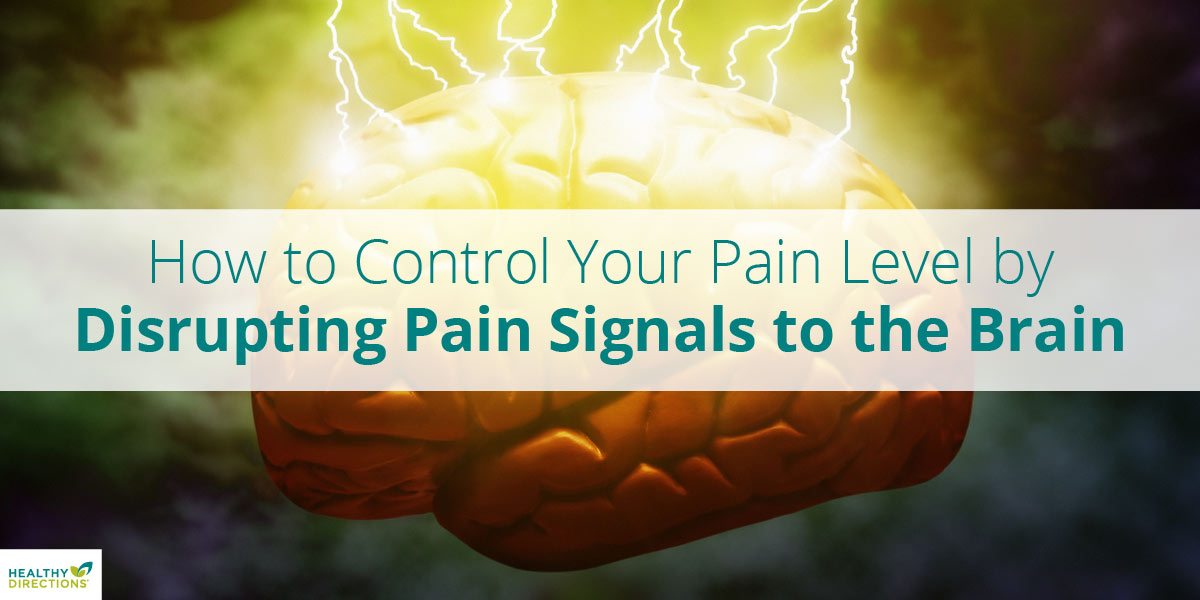
Learn why interrupting pain signals helps control pain and prevent over-sensitization to pain
For anyone trying to control and manage pain, it’s important to understand how pain signals move through the body. Why? Because you can effectively control your pain—as well as reduce the risk that your body will become over-sensitized to pain—by knowing how to disrupt those signals.
Let’s take a look at how pain signals are relayed through the body and what you can do to stop the flow.
What Is Pain, Biologically?
Your body is covered with a network of nerves. They run from your spinal cord (back bone) all the way around your body, extending to your internal organs, bones, and skin. Nerves are your body’s automatic monitoring system, and they keep track of:
- Cold and heat
- Touch and pressure
- Vibration
- Stretch
If you could actually look at a nerve, it would look like a cross between a thread and a string. Nerves are fibers. Some of these nerve fibers have special cells at their tips called nociceptors (no-see-SEP-turs).
The job of the nociceptor is to be on the lookout for damage to the body so, not surprisingly, they are concentrated in areas of the body that are prone to injury—fingers, toes, knees, and so forth. If you’ve ever wondered why injuries to your fingers and toes hurt more than injuries to other parts of the body, it is because fingers and toes are packed with nociceptors.
The Path Pain Takes Through the Body
Let’s say a man hits his finger with a hammer. The nociceptors in the nerves of that finger immediately sense the blow and send out an SOS message that travels through the nervous system to a part of the spine known as the dorsal horn. The dorsal horn acts like a processing center. It receives the incoming pain signal and, in response, releases a variety of neurotransmitters. These neurotransmitters activate other nerve cells in the spinal cord that relay the original pain message up the spinal column to the brain.
Once the pain signal arrives in the brain, it goes to an area called the thalamus. The thalamus forwards the signal to three different areas of the brain to help us understand what’s going on:
- Somatosensory cortex. This is the part of the brain in charge of identifying where the pain occurred, enabling the body to take steps to protect that body part from further injury.
- Limbic system. This is the emotional or feeling center of the brain. It makes sure you know you got hurt and, besides telling you that you’re in pain, it may also trigger anger, outrage, or fear.
- Frontal cortex. This part of the brain deals with thinking and intellectual activity, and its job is to figure out what the pain means. In the example of the man with the hammer, the frontal cortex is going to tell him what happened and why, and probably remind him that he ought to put ice on the injury right away.
This process may sound very complicated, but it all happens in just a fraction of a second—like flipping a light switch.
You Can Control Your Pain by Interrupting the Signal
The route that pain signals take from the spinal column to the brain is a one-way, one-lane street—only one message can travel in one direction at a time. Because of that, it’s possible to control your pain by disrupting the signals.
All pain signals to the brain are controlled by “gate-keeper” cells. A gatekeeper is somebody who decides who gets through the gate and who does not. Pain signals that are considered to be a serious threat to the body (for instance, if you put your hand on a hot object) are given an express route to the brain, while weak or nonthreatening signals may be delayed a bit.
What does this have to do with reducing pain? Well, have you ever banged your elbow and immediately started to rub it? This instinctive response actually works to help relieve a bit of the pain because the gatekeeper cells are now dealing with two sets of incoming messages: pain and rubbing. And because the pain highway is a one-way, one-lane street, some of those “rubbing” messages will interrupt the flow of pain messages. That’s why rubbing some kinds of injuries can actually ease the pain!
This same principle explains why topical pain relieving creams can be so effective at controlling pain—and are a key part of effective multi-modal pain treatment plans. Most of these products contain menthol, which is a slight irritant to the skin. The sensation it produces disrupts the flow of pain signals.
Signal Interruption Helps Prevent Pain Sensitization
Understanding the physiology of pain is also important because of an adaption the body can make in response to chronic pain.
When pain signals flow unabated for long periods of time—often long after the original source of pain has healed—the body can become over-sensitized to pain. That is, the body sometimes begins taking ordinary pain signals and decides to make them seem stronger than they really are. Once this adaptation has occurred, it cannot be reversed.
This is why it’s so crucial to take advantage of every opportunity—no matter how small—to control your pain.


